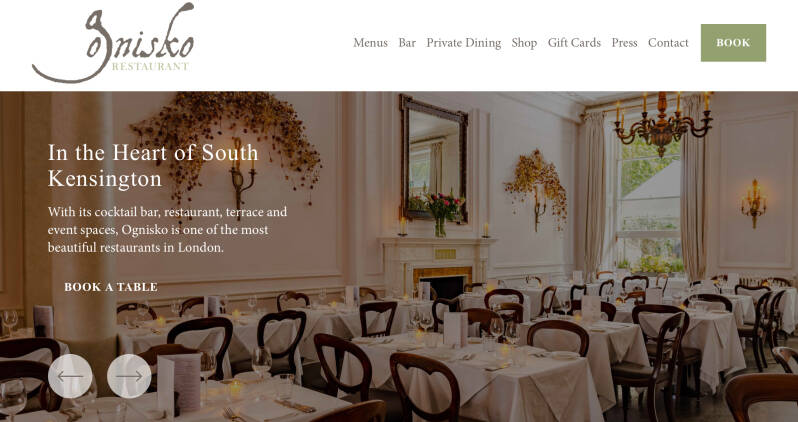From NOTTING HILL to HAMMERSMITH RIVERSIDE
In this chapter:
Route through the former Holland Park Estate (Kensington)
Detour: SHEPHERDS BUSH & WHITE CITY
Long regular route to KING ST., Hammersmith commercial artery, and Hammersmith Riverside, passing RAVENSCOURT PARK
Detour to ST.PETER’s SQUARE, and the to Hammersmith Riverside
Longer detour East, to CHISWICK and TURHHAM GREEN.
Short Route to Hammersmith Riverside
Hammersmith Riverside sights


Panorama of the Thames
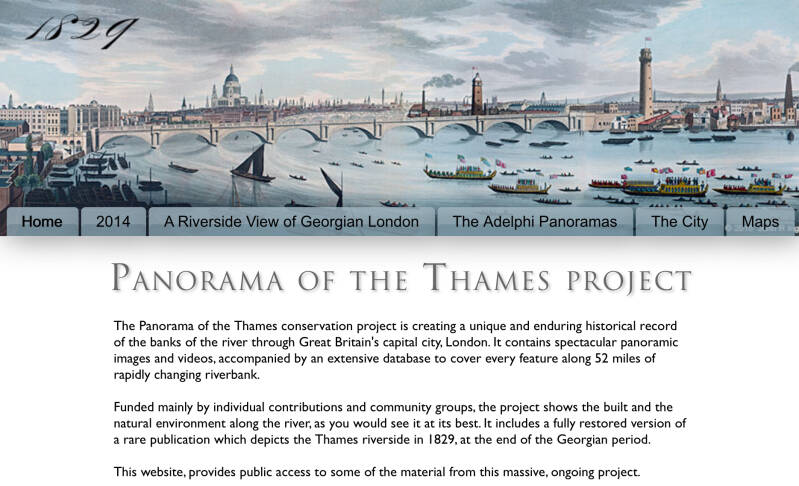

Leaving behind Notting Hill and Royal Crescent and crossing Holland Park Avenue…
Former Holland Park Estate
EUGENE SANDOW, professor of physical culture tO king GV, lived here

Body-builder and entertainer. Born Friedrich Wilhelm Müller in Königsberg, Prussia (now Kaliningrad, Russia). He left Prussia to avoid military service and travelled through Europe perfecting his physique. His stage surname came from his mother's maiden name. We don't know where 'Eugen' came from but it seems likely that it was connected to Sandow's promotion of the eugenics movement, certainly not a case of 'nominative determinism' (see Isambard Brunel for examples). In the USA he performed for the impresario Florenz Ziegfeld. In about 1895 he moved to Britain, and in 1911 was honoured by George V, who followed his teachings, appointing him ‘professor of scientific physical culture to the king’. Died at his home in Holland Park. This film from 1894 shows him flexing his muscles.
2019: The Natural History Museum tells of the statues made from a 1901 cast of Sandow's body: one briefly displayed in 1901 and the other made on commission from Arnold Schwarzenegger in the 1990s.
RUI BARBOSA, Brazilian statesman, lived here

Born Ruy Barbosa D'Oliveira in Salvador da Bahia, Brazil. A defender of civil liberties, he fought for the abolition of slavery in Brazil. He fled to London after being accused of being a conspirator in a naval revolt. On his return he was elected as a senator. Nicknamed 'The Eagle of the Hague' for his distinguished participation in the Hague Peace Conference of 1907. Died in Petropolis, Brazil.
Addison Road

Scientist and statesman. Born Chaim Azriel Weizmann, at Motol, near Pinsk, Belorussia. (Modern day Belarus). He studied in Germany and Switzerland producing a number of patents on dyestuffs. In 1904 he moved to Manchester, believing that Britain could be influential in establishing a Jewish homeland in Palestine. His work here led to the discovery of a bacterium which converted carbohydrate into acetone and was crucial during WW1 in the production of cordite. Partly out of gratitude for this, the government agreed to the Balfour Declaration which led to the establishment of Israel. Already an important figure in the Zionist movement, he became Israel's first president in 1948. Died at his home Weizmann House, Rehovot, Israel.
CARDINAL VAUGHAN MEMORIAL SCHOOL
Established in 1914 by a group including Viscount Fitzalan, the Duke of Norfolk, and the Marquis of Ripon, the school began in a Victorian building called Addison Hall with 29 boys The school expanded in the 1920s and sought recognition from the Board of Education for grants as an independent day school. By 1928, enrolment reached 220, and neared 300 by 1938.
The school became a grammar school in 1944 and a comprehensive in 1977, reflecting broader educational shiftsboys' comprehensive school with girls admitted in the Sixth Form
The school emphasizes a strong Catholic ethos, . It is part of the St John Southworth Catholic Academy Trust.
promoting love, service, and community within its students

Nearby
SIR ISAIAH BERLIN lived here

Sir Isaiah Berlin OM CBE FBA was a Russian-British social and political theorist, philosopher, and historian of ideas.
Born in Riga into a wealthy family, which moved with him to London, in 1921. The family lived here 1922-28.
He became increasingly averse to writing for publication. However his improvised lectures and talks were sometimes recorded and transcribed, and many of his spoken words were converted into published essays and books, both by himself and by others, especially his principal editor from 1974, Henry Hardy.
Known for his 1958 lecture "Two Concepts of Liberty". Other topics included: the counter-enlightenment, value pluralism, etc.
Holland Villas Road
Lower Addison Gardens
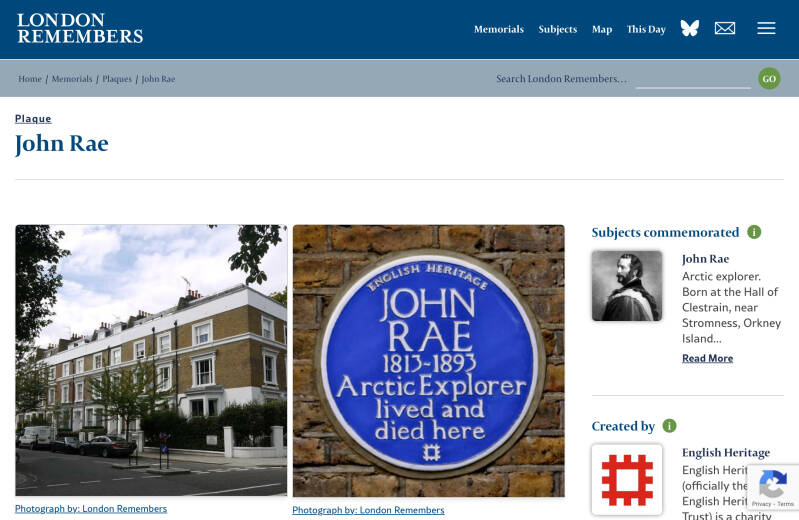
St.JOHN THE BAPTIST, parish church
This dramatic and inspiring Grade I ‘cathedral’ church is an acknowledged masterpiece by James Brooks (1825-1901), a major and prolific Victorian architect. Based on the c12th plain Cistercian model, it was developed incrementally from the mid 1870s to 1916 for a more elaborate expression of theology through ritual.
The site was bought from the Holland Estate in 1868 with the intention of building a daughter church in the parish of St Barnabas, Addison Road. A condition of purchase was that the new church must be built in stone, making St John’s an expensive undertaking; most churches were built of brick around this time. Today it has its own parish, one of the smallest in London, and is part of the united benefice of Holland Park


Detour: SHEPHERDS BUSH & WHITE CITY
Along Richmond Way
W12 Shopping Centre
Shops and eateries: Shepherd’s Bush Green, Uxbridge Road, Goldhawk Road
SHEPHERD’S BUSH EMPIRE
run by the Academy Music Group. It was originally built in 1903 as a music hall for impresario Oswald Stoll, designed by theatre architect Frank Matcham; among its early performers was Charlie Chaplin. In 1953 it became the BBC Television Theatre.[1] Since 1994, it has operated as a music venue
Former PAVILION Cinema, now hotel
Built in 1923 as a cinema, it was badly damaged by a flying bomb in 1944. In 1955, it was restored and re-opened, but it changed ownership a number of times, and eventually in 1983 became a bingo hall. The Pavilion closed its doors for good in 2001, and remained empty and disused for much of the next decade. In 2009, planning permission was granted for conversion into a luxury hotel. Demolition work began in 2012, with only a part of the building's façade retained. The re-built hotel, the Dorsett Shepherd's Bush, London, opened in 2014
Spies Meeting Site?
THE DEFECTORS WEALD P.H.
The name is thought to be derived from the fact that one of the "Cambridge five" Cold War spies worked nearby at the BBC and 'weld' is a joint/joining i.e. a coming together.
The Cambridge Five?
WHITE CITY
Site of the 1908 Olympic Games

Westfield Shopping Centre

LIME GROVE STUDIOS
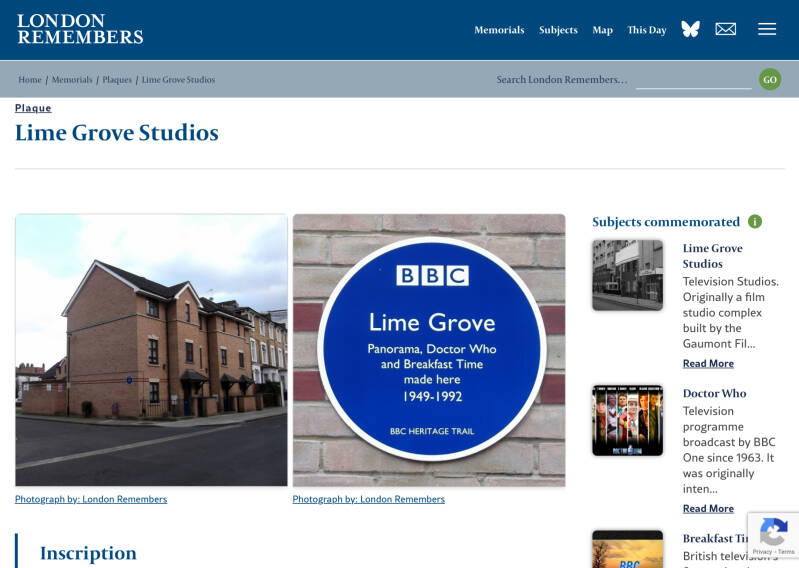
The complex was built by the Gaumont Film Company in 1915. It was situated in Lime Grove, a residential street in Shepherd's Bush, and when it first opened was described by Gaumont as "the finest studio in Great Britain and the first building ever put up in this country solely for the production of films". Many Gainsborough Pictures films were made here from the early 1930s. Its sister studio was Islington Studios, also used by Gainsborough; films were often shot partly at Islington and partly at Lime Grove.
In 1949 the BBC bought Lime Grove Studios as a "temporary measure"—because they were to build Television Centre at nearby White City—and began converting them from film to television use. The BBC studios were ceremonially opened on 21 May 1950 by Violet Attlee (wife of the then prime minister Clement Attlee)
Site of original BRILLIANT SIGNS factory
It was named after their concept called the 'brilliant letter'. This comprised a pressed copper sheet with a v-shaped cross section so as to imitate the classic incised wooden fascia letter (Hope you're keeping up). It was then fixed behind painted glass by way of flanges with shellac, and covered with lead foil to seal it hermetically from the weather.
In 1907 they built Paragon Works in Stowe Road, Shepherds Bush - a purpose-built 3 acre factory site.


End of the detour to Shepherd’s Bush and White City

Dewhurst Road > N: Shepherd’s Bush Road > Batoum Gdns > S: Sulgrave Rd > Trussley Rd. > Hammersmith Grove > Adie Rd.
MICHAEL COLLINS lived here
BRADMORE Conservation Area
Hammersmith Grove
Small hotels
Shops and eateries

Adie Road
Former HENRY MOORE’s studio

Iffley Rd.
GODOLPHIN and LATIMER SCHOOL
A day school for 800 girls aged between 11 and 18. It began in 1861 as the Godolphin School, a boys’ boarding school set in fields near the River Thames in Hammersmith. The main buildings date from this time. The boys’ school did not thrive, however, and in 1905 a new independent day school for girls was created on the same site. Support from the Latymer foundation resulted in a new name: the Godolphin and Latymer School.
Following the end of the Second World War and the transformational Education Act of 1944, Dame Joyce Bishop (Head from 1935 to 1963) took the decision that Godolphin and Latymer should become a state grammar school. Thus it was free to offer places to bright girls totally regardless of their parents’ background or income. Dame Joyce’s vision resonates strongly with the school today.
In 1977 grammar school status was removed from many London schools and Godolphin and Latymer reverted to the independent sector.
Aldensey Rd.

Short Route to Hammersmith Riverside
Banim St.
Former WARING & GILLOW Furniture Factory, now THE AIRCRAFT FACTORY
You are viewing the building, bur the entrance is along CAMBRIDGE GROVE
The Aircraft Factory is now a campus office environment with onsite coffee bar, gardens and terraces. The offices provide high quality character office space in CAT A open plan or fully fitted and furnished.
When John Waring and Robert Gillow set up their furniture business in 1903, little did they know that one day their factory would help Britain win both world wars.
Their factory in Hammersmith, west London, was used to manufacture cabinets and other high-end furnishings but all that changed at the outbreak of the First World War – when they instead started producing aircraft.
There are amazing photographs showing women and boys hard at work as they put together biplanes and triplanes.
And years later, the Waring & Gillow factory would also make the iconic Mosquito light bomber, which was put to devastating effect in the Second World War.
Not far away, in WHITE CITY (SHEPHERD’S BUSH): : https://historicengland.org.uk/education/schools-resources/educational-images/waring-and-gillow-factory-white-city-11481
Industrial production: From peace to war
During World War II, many British factories underwent significant conversions to support the war effort, shifting from producing consumer goods to manufacturing munitions and military equipment. This transformation was crucial for supplying the Allied forces and sustaining the war on the home front and battlefields. Examples of Factory Conversions:
Munitions Production: Factories that previously produced items like tires, asbestos products, and even glucose were repurposed to create ammunition, gas mask components, and other essential war materials.
Aircraft and Tank Production: Factories that previously focused on civilian goods were retooled to produce aircraft and tanks.
Royal Ordnance Factories: These factories, built or expanded during the rearmament period, played a vital role in producing weapons and ammunition.
Impact and Importance:
Increased Production:
Former church, now part of the school
Cambridge Grove
ELLEN CRAFT and WILLIAM CRAFT, former American slaves

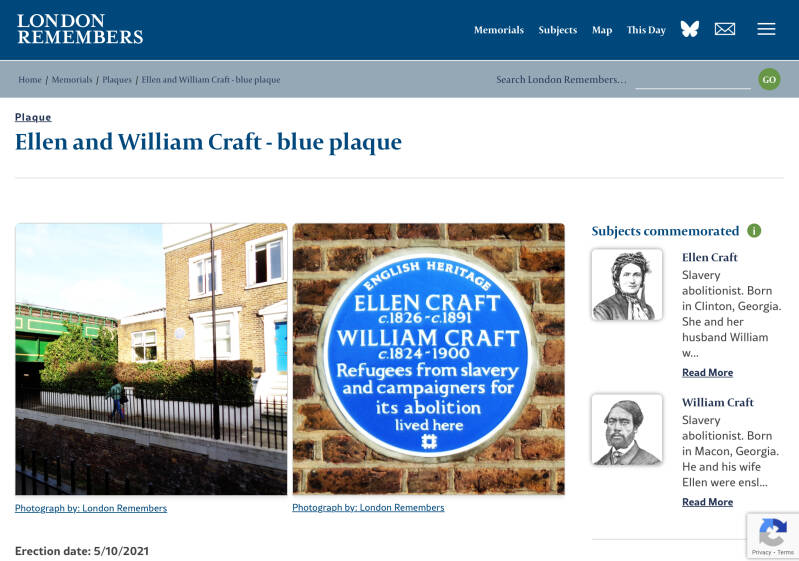
In England, the Crafts were finally able to settle and start their family – they had five children: Charles, William, Brougham, Alfred, and Ellen. They turned their home in Hammersmith into a centre for Black activism and abolitionist activity, inviting fellow abolitionists, like Sarah Parker Remond, to stay, and Ellen and William continued to tour and tell their story.
King St.
To the West, not far away
The Trafalgar Way
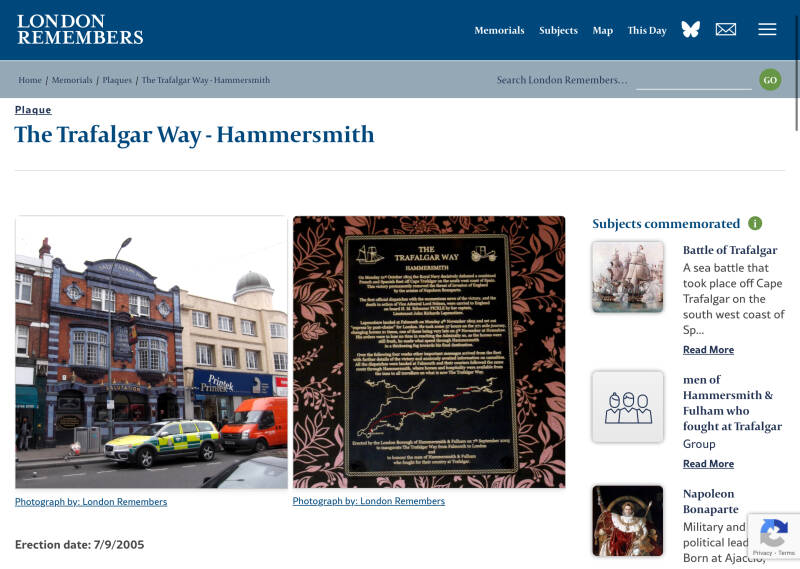
The first official dispatches with the momentous news of the victory, and the death in action of Vice Admiral Lord Nelson, were carried to England on board H. M. Schooner Pickle by her captain, Lieutenant John Richards Lapenotiere.
Lapenotiere landed at Falmouth on Monday 4th November 1805 and set out "express by post-chaise" for London. He took some 37 hours to cover the 271 mile journey, changing horses 21 times, one of these being very late on 5th November at Hounslow
THE SALUTATION P.H.
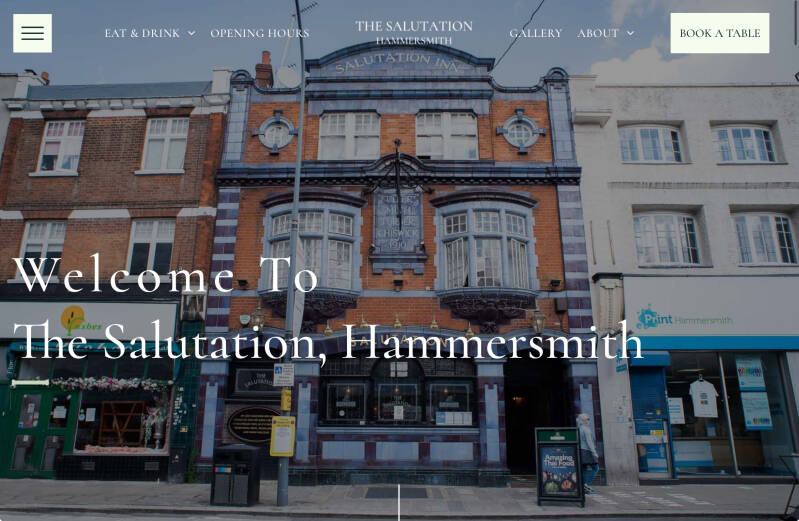
In many parts of England stood alehouses known as "The Archangel Gabriel Salutes the Virgin Mary", referring to the Hail Mary greeting given by Gabriel to Mary, mother of Jesus. Such a name was commonly given to the guesthouses of religious institutions,
Shops and eateries


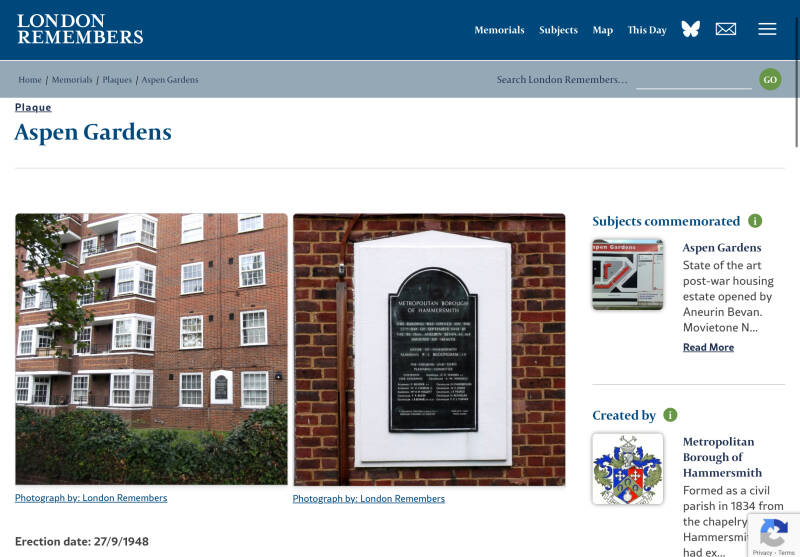
Bridge Avenue

HAMMERSMITH FLYOVER
In December 2011 Transport for London(TfL) issued a statement that "damage to the ageing 1960s structure has been caused by water ingress, including salt water due to grit laid during the winter months, which has corroded and weakened the cables which help support the flyover".[1] TfL stated there was "a very remote possibility that Hammersmith Flyover [would] collapse"
2011 by a whistleblower who revealed that problems with the structure were far more severe than was being made public.[18][19] The flyover was closed to all traffic from 23 December 2011[20][21] to 12 January 2012 after structural defects were discovered.[7] From 13 January[7] to 27 May[22] the bridge was only open to a single lane of light traffic in each direction for repair work
New post-tensioned steel cables "are being installed in concrete blocks above and below the deck's central reservation".[24] The repairs are now complete and extended the life of the bridge by 15 years
the bearings underneath the structure replaced, a new carriageway drainage system [fitted] and the entire flyover waterproofed and resurface
The construction sector has proposed that the flyover be replaced with a tunnel. A group of architects, including Assael Architecture and Simone de Gale, ran an event as part of London Festival of Architecture in 2012 to introduce the idea
Digby Mansions
HAMMERSMITH BRIDGE

Long regular route to Hammersmith Riverside, passing RAVENSCOURT PARK, and a detour through St.Peter’s Sq.



”BRACKENBURY VILLAGE”
Conservation Area
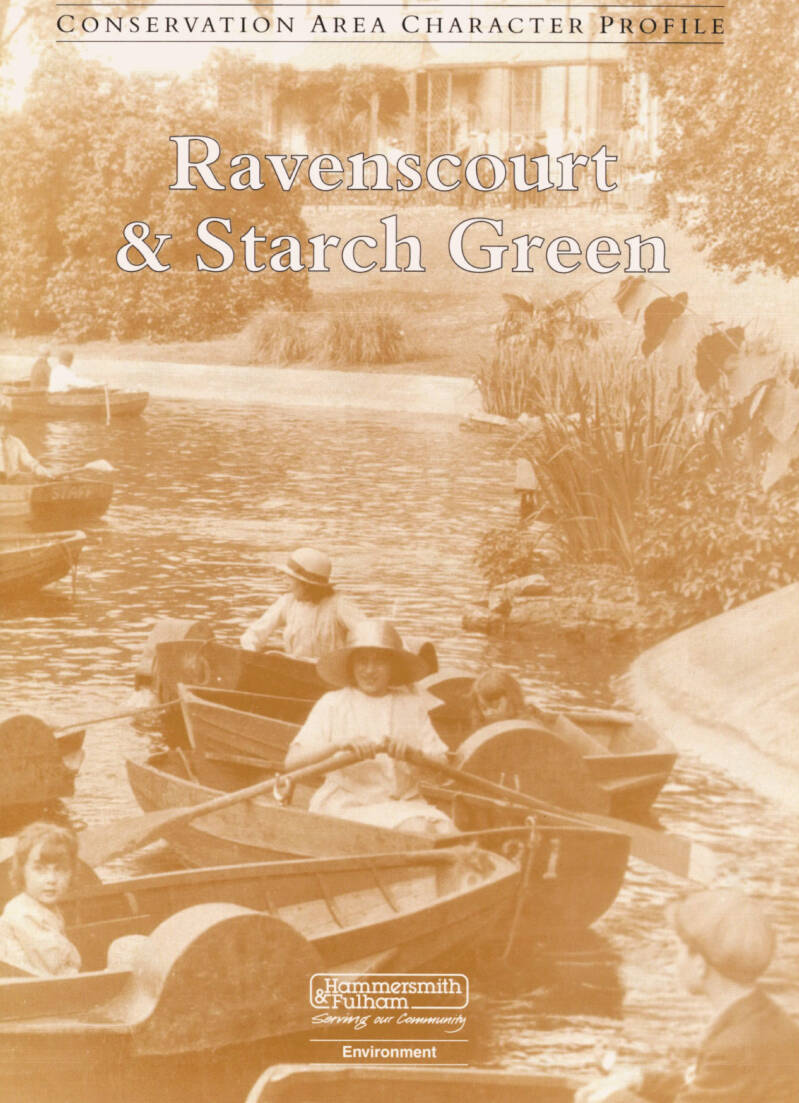
Aldensley Rd. > Cardross Rd. > Dalling Rd. > Wellesley Ave. > Paddenswick Rd.
THE ANGLESEY ARMS P.H.
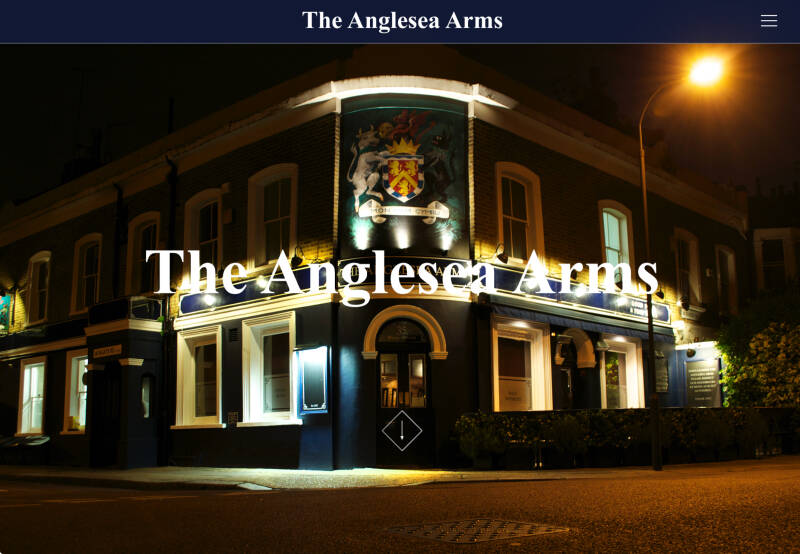
They say: “The Anglesea Arms is one of the original gastropubs having first opened its doors as a foodie pub back in 1995. The pub has changed hands twice since then but the standards remain as high as ever”
Ravenscourt Park
The origins of Ravenscourt Park lie in the medieval manor and estate of Palingswick (or Paddenswick) Manor, located on the site and first recorded in the 12th century.[2] The historic name still exists today in the name of Paddenswick Road, which runs along the north east boundary of the park.
By the 13th century the manor house was a mansion surrounded by a moat fed by the Stamford Brook. The lake in the centre of the park today is a remnant of the original moat.
King Edward III’s mistress Alice Perrers lived in the manor during the 14th century.
The manor house was rebuilt in 1650 and in 1747 it was sold to Thomas Corbett who named it Ravenscourt, probably derived from the raven in his coat of arms, which was itself a pun on his name as corbeau is French for raven.
In 1812 the Ravenscourt House and estate were bought by its final private owner, George Scott, a builder and philanthropistwho developed nearby St Peter’s Square. Scott employed leading landscaper Humphry Repton to lay out the gardens of the estate, and encouraged the building of houses along its edges. According to a park plan from 1830, there were 78 houses within the park, and by 1845 this number had risen to 330
Memorial to GILES VERNON HART
Telecommunications engineer and trades union activist. Born in Khartoum, Sudan. While working as an executive officer at Trinity House lighthouse authority, he set up a union branch. In the 1980s, he was chairman, secretary and treasurer of the Polish Solidarity Campaign and was a prominent member of the British Humanist Association. Killed on the number 30 bus that was blown up in Tavistock Square in the July 2005 terrorist attacks.
Exiting the park along Ravenscourt Avenue
King St.
POLISH SOCIAL and CULTURAL ASSOCIATION

It was founded in 1967 and funded by public subscription, on the initiative of Polish engineer Roman Wajda. The rationale was that during the Cold War, the Polish community in the United Kingdom was politically opposed to the Polish Communist authorities in its native country and could not otherwise avail itself of a continuous source of Polish history and culture and for potential future generations in exile. It replaced the venues of a number of distinct military, veterans and social associations and meeting places that had been scattered mainly across the Royal Borough of Kensington in the aftermath of World War II.
Polish Community in London
In the Kensington-South Kensington area
DAQUISE Restaurant
The KATYN MASSACRE MEMORIAL, GUNNERSBURY CEMETERY
A notable landmark at the cemetery is a monument, in the form of a black obelisk, dedicated to the Polish victims of the Katyn massacre. It was designed by Louis Fitzgibbon and Count Stefan Zamoyski. This monument was unveiled on 18 September 1976 amid considerable controversy.[
During the period of the Cold War, successive British governments objected to plans by the UK's Polish community to build a major monument to commemorate the massacre. The Soviet Union did not want Katyn to be remembered, and put pressure on Britain to prevent the creation of the monument. As a result, the construction of the Katyn monument was delayed for many years. After the local community had finally secured the right to build the monument, no official government representative was present at the opening ceremony (although some Members of Parliament did attend the event unofficially).
NORTHOLT POLISH WAR MEMORIAL
Close to RAF Northolt, commemorating the Polish airmen who fought for Great Britain, was erected in two stages. It was initially unveiled in 1948 with the names of 1,243 flyers. In time, a further 659 names were identified and were added during a refurbishment of the monument carried out in 1994-6 funded by a public appeal. It was ceremonially re-opened. In 2015 a memorial garden was added to mark the 75th anniversary of the battle. Franciszek Kornicki (1916–2017) is the last Polish fighter pilot to die. His funeral was held in November 2017.
Precisely when I am redacting this chapter… BBC launches Polish language news service
- And the BBC has a couple of famous people of Polish extraction


Back to King St.
Church
Fountain
PALLINWICK HOUSE

From Fulham SW6, cited by London Remember:
Palingswick House was originally built around 1849 (BARNABAS STEEL initials appear in the façade) as a family home, but over the years has been used as an orphanage and workhouse, the orphanage's superintendent’s house, a school, children’s home, hostel for diabetic children and a community resource centre. The house was renamed in 1954 in honour of the old MANOR house.
The West London Free School was set up in 2011 and moved here a few years afterwards following a planning application.
The BLACK BULL: from Holborn to Hammersmith
The Black Bull was modelled in the early 19th century by Obadiah Pulham from Pulham & Son. In Victorian times, this was a well-known Suffolk-based firm specialising in the production of garden ornamentation for prestigious sites across the country and the material used would have been ‘Pulhamite”, a particular blend of artificial stone they had devised.
Brought into London by Thames barge, the bull’s destination was to serve as the sign for the Black Bull coaching inn at 122a Holborn, an establishment mentioned by Dickens in Martin Chuzzlewit. He adorned the front of that building until 1904 (seen below the second floor window alongside the Black Bull nameplate), when the old inn was demolished to make way for a corner extension to the original Gamages department store.
St.PETER’s SQ. Conservation Area
St.Peter’s Grove
ST.PETER’s SQ.
The square was laid out during the economic boom of the 1820s, when the then owner, George Scott decided to build a speculative housing development on part of his Ravenscourt Park estate and also provided the land for St Peter's Church, Hammersmith. From 1827 plots were developed piecemeal by builders who undertook to conform to the master plan. The square was mostly complete by the end of the 1830s. The houses are mostly built in groups of three, with stucco fronts, pediments and Ionic porches. Some retain eagles, lions and dogs as decoration. Numbers 1 to 6 were the first to be built and are the grandest in the square
ST.PETER’s Church
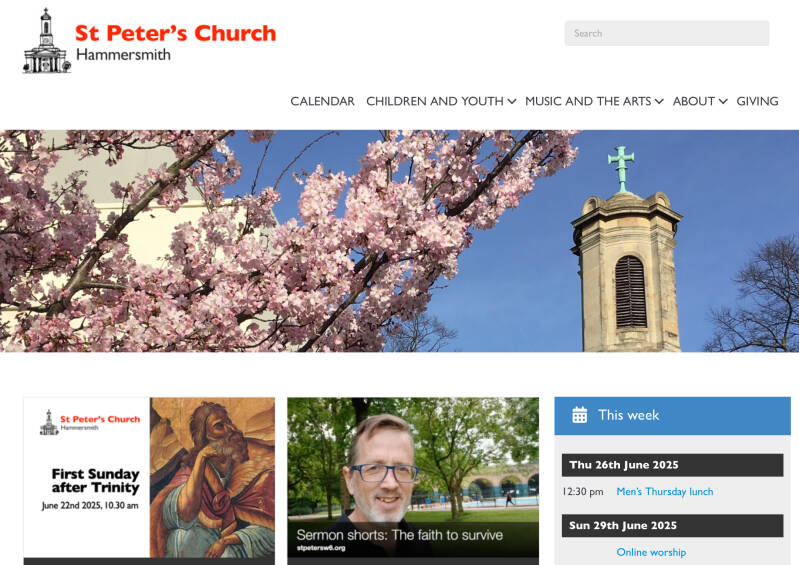
THE LEANING WOMAN artwork
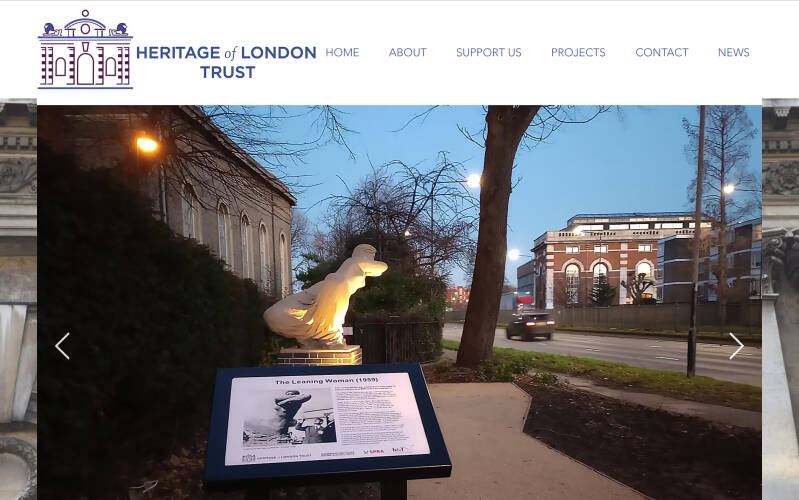
It's a concrete sculpture by Karel Vogel, commissioned by the London County Council in 1958. The sculpture was intended to compensate for green space lost during the widening of the A4. It depicts a classical-style figure leaning to the side, and was designed to be a calming influence on drivers using the busy road
Subway Southwards
THE BLACK LION P.H.
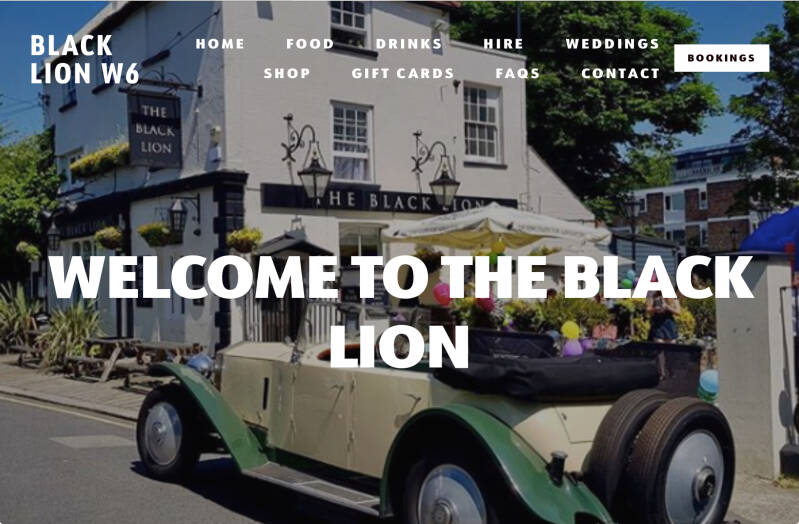


WESTWARDS diversion of the route: alongside HAMMERSMITH TERRACE and CHISWICK MALL, towards the FULLER’S BREWERY, ST.NICHOLAS Church and CHISWICK HOUSE. Then, STRAND-ON-THE-GREEN, KEW BRIDGE, KEW GARDENS and VILLAGE…
Welcome to Chiswick and Turnham Green!
Welcome to the London Borough of Hounslow…

EDWARD JOHNSTON lived hefe
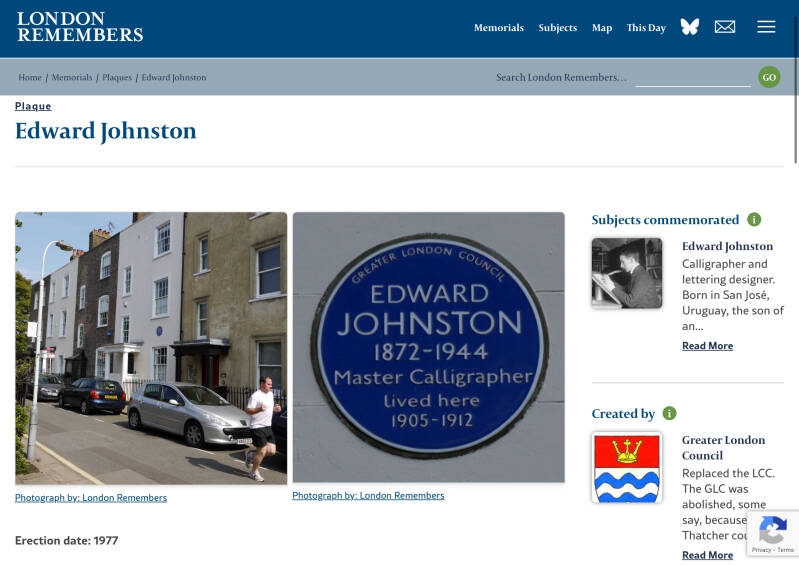
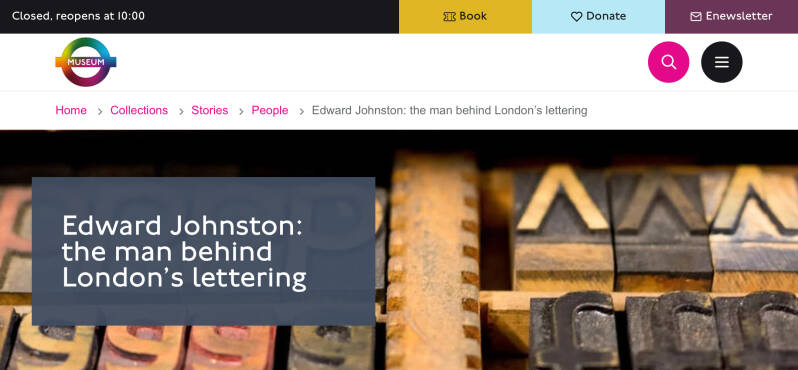
Note: the typeface used on this plaque is not "English Heritage’s own unique font" to quote EH, but London Underground’s own typeface, New Johnston sans serif, the 1979 version of the typeface designed by Johnston and introduced in 1916. Three other Underground-related EH plaques use this font: Frank Pick, Lord Ashfield and Harry Beck (E10).


FULLER’S Brewery

St.NICHOLAS Church
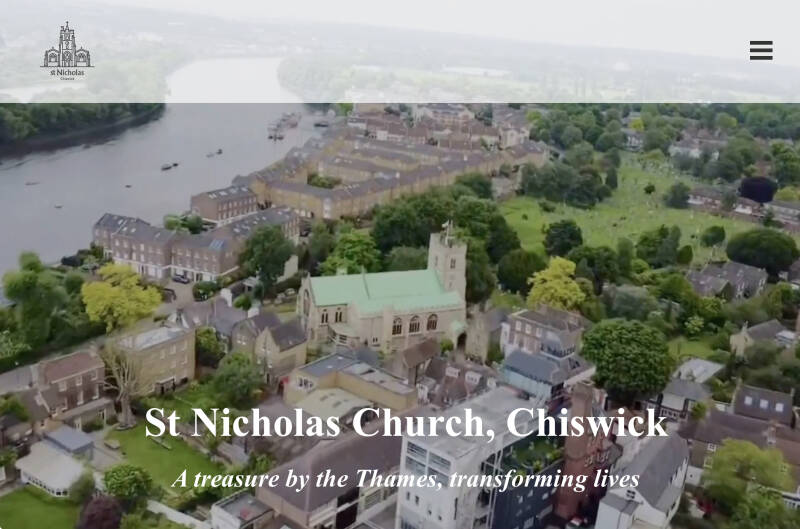
There are also briefer notes on many other memorial plaques in the church. The booklet ends with some notes on whether or not the body of Oliver Cromwell is buried in a vault in the church. The contents of this vault were visible in 1882-4 when the present church was built. As well as the coffins of Cromwell’s two daughters, there is said to have been a third, shorter coffin, attributed by some to Cromwell himself.
CHISWICK HOUSE & GARDENS

HOGARTH HOUSE

TURNHAM GREEN

GUNNERSBURY PARK and MUSEUM
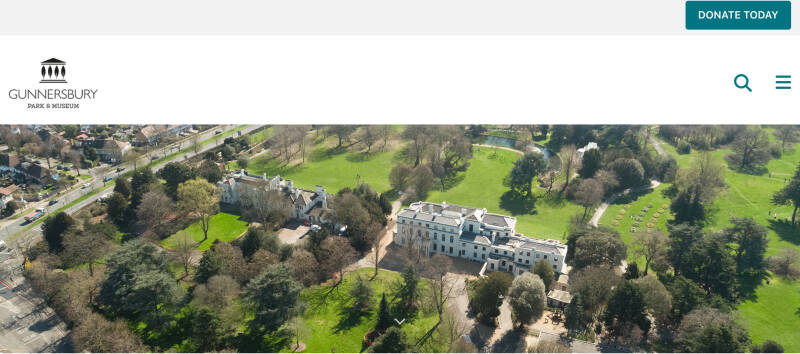
LONDON TRANSPORT MUSEUM Depot

END of the diversion

After THE BLACK LION P.H. the regular route continues on Eastwards

Upper Mall
Site of WEST MIDDLESEX WATER COMPANY


In 1806 the West Middlesex Water Company works were established here between The Old Ship and Hammersmith Terrace. The central part of the complex was designed by William Tierney Clark, who was appointed Clerk of the Works in 1810.
The buildings were a fine example of industrial design, with two huge pumping engines housed in splendid brick buildings and a system of state of the art cast iron pumps. In 1838 the company designed a system to bring water under the river in a huge main from two large reservoirs in Barnes. It was then pumped up to Marylebone and Paddington.
A mysterious object…
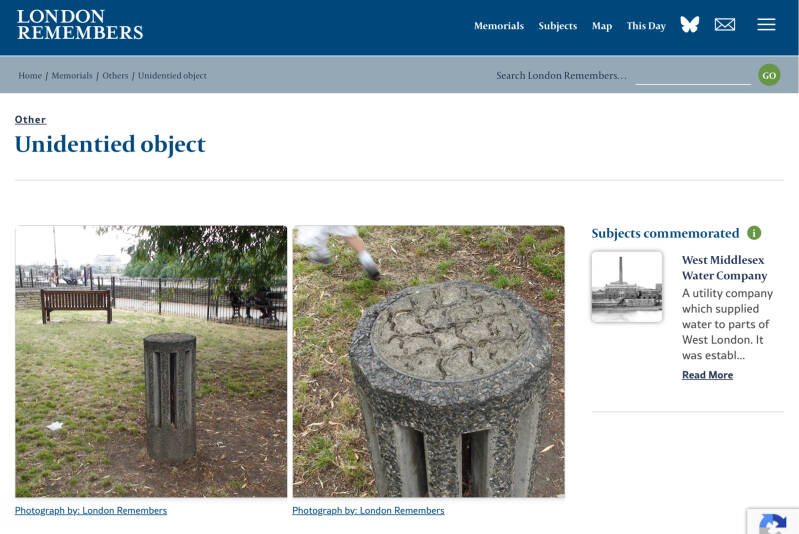
THE OLD SHIP P.H
LINDEN HOUSE
An 18th-century merchant's riverside house with a rich history, currently serving as the clubhouse for the London Corinthian Sailing Club and the Sons of the Thames Rowing Club.
Originally built in the early 1700s (the exact construction date is unknown, Linden House is first recorded as a named dwelling in 1795. It's believed to have been built as early as 1685 by a Dutch merchant, Isaac le Gooch. It has served various purposes throughout its history, a part of its use as a private dwelling (in the 19th c. becoming part of a larger property that included Grafton House): a girls' school (St. Katherine's College), and a J. Lyons & Co sports and social club. In 1962, it became the home of the London Corinthian Sailing Club.
Linden House is a popular venue for weddings, corporate events, and other celebrations, while also continuing its role as a sailing and rowing club
BOATHOUSE
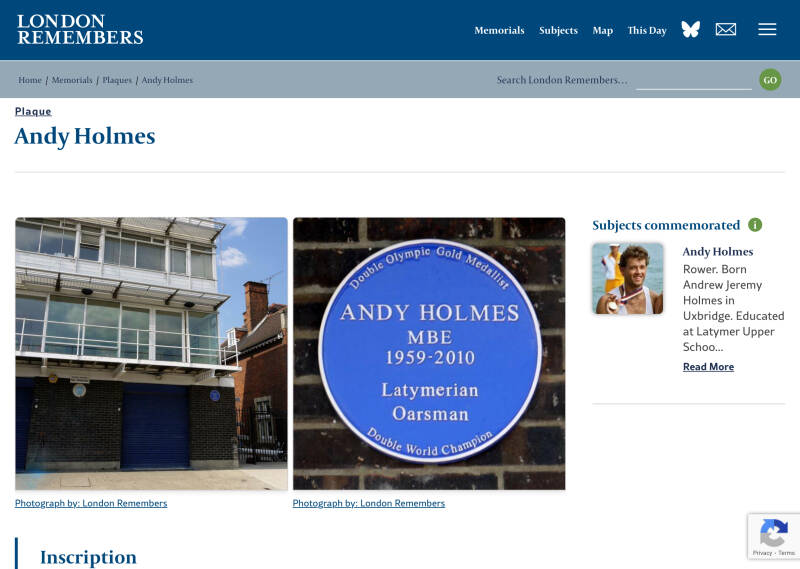
RIVERCOURT HOUSE, now LATYMER PREP SCHOOL
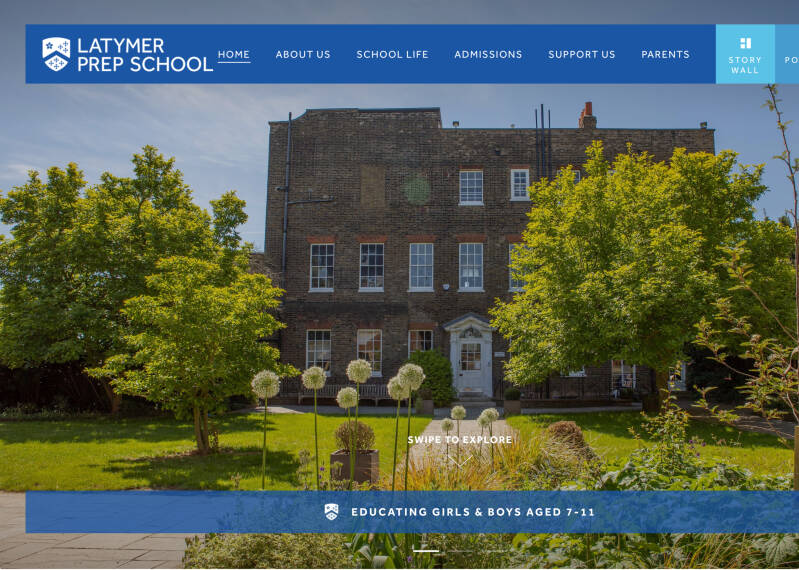
Rivercourt House was built in about 1808 on the site of a 17th century house of the same name. At the same time the Queen Dowagerʼs House was taken down and its site and gardens incorporated into the Rivercourt Estate.
It is thought that the present house incorporates many features from both the earlier house and from the Queen Dowagerʼs House. The last remnant of the Queen Dowagerʼs House, the Orangery, could be seen in the gardens of Rivercourt House for many years until Rivercourt Road was built.
In the twenties the author and committed Socialist, Naomi Mitchison (1897-1999), lived at Rivercourt House with her family. They were renowned for wonderful parties at which they were joined by friends such as Aldous Huxley and E.M. Forster. Mitchison was an immensely energetic, often controversial, woman, who was a vocal campaigner for womenʼs rights.
A simple, tiny coach house, a great invention…

The small building was built as the coach-house to number 26.
Here, inventor and meteorologist, FRANCIS RONALDS, probably born in London, successfully sent messages through an eight mile long primitive electric telegraph by looping wire enclosed in glass tubes all around his back garden in Hammersmith. He took his invention to the British Admiralty, but they showed no interest and he abandoned interest in it. He was later involved in a system for registering meteorological data. Knighted in 1870. Died at his home St Mary's Villas, Battle. More about this interesting man at www.sirfrancisronalds.co.uk. In fact, as a scientist and inventor his achievements span the disciplines of electricity, meteorology, photography, mechanics, optics and more. He may be called the first electrical engineer.
Kelmscott House, built at the end of C18th. The house originally shared grounds with 22 and 24 Upper Mall that stretched all the way to King Street.
This property has had some notable occupants, including Sir Francis Ronalds (1788-1873), electrician and meteorologist, inventor of the electric telegraph in 1816. He conducted many of his most important experiments in the back garden - then about an acre in extent - and fragments of the old insulated cable he buried in the process are still sometimes found.
George MacDonald (1824-1905), poet and novelist, occupied the house with his wife and 11 children, at which time the property was named The Retreat. This family were great hosts and entertained prominent Victorians such as Ruskin and Burne-Jones.
The house was then occupied by William Morris (1834-1896) who took the lease and called it Kelmscott House, out of affection for his country house in Oxfordshire - both properties linked by the Thames. His artistic output continued and, among other ventures, he set up looms in the coach house to hand-knot his Hammersmith Carpets.
KELMSCOTT HOUSE: WILLIAM MORRIS lived here
The WILLIAM MORRIS SOCIETY IN THE US says:
Widely recognised as the leader of the Arts and Crafts movement, Morris advocated for the importance of craft. Believing that art was the expression of ‘pleasure in labour’, Morris’s passion for the arts of everyday life and abhorrence of Victorian industrial society.
That led him to political activism. Influenced by Marxism, anarchism and revolutionary socialism, Morris co-founded the Socialist League, campaigned for workers’ rights, and lectured widely on art, labour , and politics.
Morris was himself a prolific designer in a variety of media. His printed textiles, tapestries, carpets, tiles, and wallpapers transformed Victorian interiors.
As founder of the Society for the Protection of Ancient Buildings, Morris has had a lasting impact in the field of heritage preservation.
Towards the end of his life, his creative energies were focused on book printing.
More WILLIAM MORRIS memorial plaques in London

Socialists
"Guests and neighbours, on the site of this guest-hall once stood the lecture-room of the Hammersmith Socialists. Drink a glass to the memory! May 1962".
"News from nowhere". William Morris.
William Morris had belonged to H.M. Hyndman's Socialist League, but when its views became too extreme for him, he founded the Hammersmith Socialist Society which met at his home, Kelmscott House, Hammersmith. It served as a forum for Sunday evening lectures and discussions on political and social issues. Its prominent members and speakers included Gustav Holst, G.B.Shaw, W.B.Yeats, Burne-Jones, W. H. Hooper, Emery Walker and Cobden-Sanderson. In the photograph (https://www.londonremembers.com/subjects/hammersmith-socialists?memorial_id=3844) Morris is the heavily bearded chap standing to the right of the banner.
Former DOVES BINDERY and PRESS
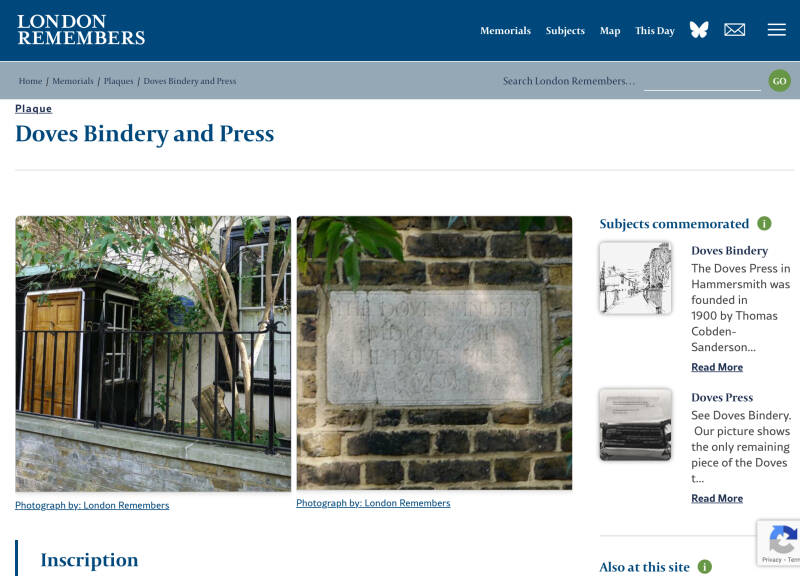
The Doves Press in Hammersmith was founded in 1900 by Thomas Cobden-Sanderson in partnership with Emery Walker and was named after the nearby pub. Sanderson had already set up The Doves Bindery in 1893 and it bound all the books that Doves printed as well as many of the Kelmscott books. The enterprise was an examplar of the Arts and Crafts movement. They used their own type, The Doves Type, based on types from the middle ages. Emery and Sanderson fell out and the partnership was dissolved in 1908. Regarding the typeface they agreed that Sanderson could continue to use it and that eventual ownership would rest with whoever outlived the other. Sanderson (the older man) was not happy with this and by 1917 he had thrown all of the type into the Thames from Hammersmith Bridge (piece by piece, at night), all but one piece which is preserved in the Emery Walker Library, housed at the Cheltenham Art Gallery & Museum. Sanderson had already ceased printing during the war but the destruction of the type saw the end of the Press. He moved into the building and died there a few years later.
2015 - amazingly the type was retrieved from the river!
THE DOVE P.H.
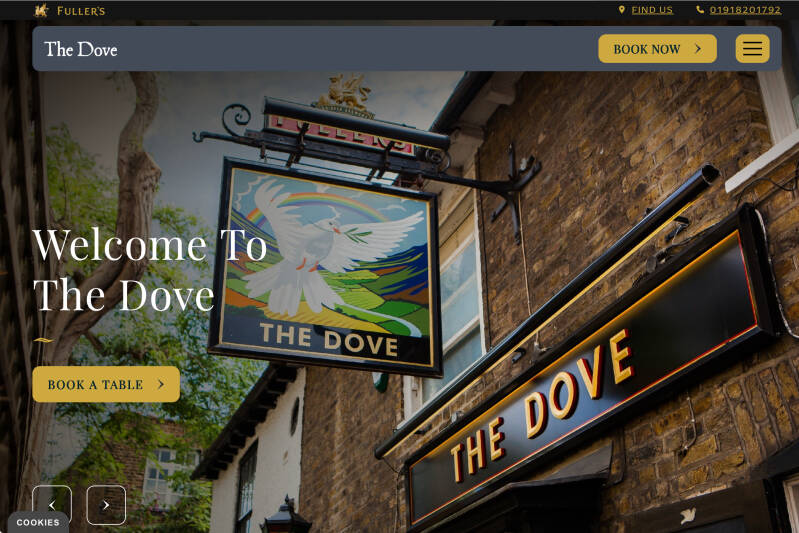
Furnival Gardens
A former industrial area, called LITTLE WAPPING, cleared after bombing. WILLIAM MORRIS might take conscience of the suffering of the working classes in an overcrowded slum so close to his home…
It was once the location of the mouth of Hammersmith Creek, which had an active fishing trade until about 200 years ago. The creek was filled in in 1936.
The gardens were laid out in the 50s.
The name commemorates Dr Frederick Furnivall, an important figure in the development of the sport of rowing, which remains an important activity on this stretch of the river.
In 1891 when the Amateur Rowing Association refused to accept working men as ‘amateurs’, Furnivall founded the National Amateur Rowing Association which anyone could join. Given his passionate opposition to discrimination, he wanted to break into the traditionally male-dominated world of river sport, by building a club for women. Membership of the Hammersmith Sculling Club, founded in 1896, was extended to men in 1901. The name was changed to Furnivall Sculling Club for Girls and Men.
In 1849 he opened a school for poor men and boys and in 1851 he sold his book collection so as to give £100 to support striking woodcutters. The following year he helped establish the Working Men’s Association. But it was his literary work that attracted national attention. In 1861 he started work on a dictionary which finally saw the light of day as The Oxford English Dictionary. That task was taken out of his hands as he was diverted by new pursuits. He founded the Early English Texts Society in 1864, the Chaucer Society in 1886, the Ballad Society and also the New Shakespeare Society in 1873, the Wicliff Society in 1881, and in 1886 the Browning Society and the Shelly Society. In his spare time he became the leading expert of the day on Chaucer.
Site of the FRIENDS MEETING HOUSE
The site of the burial ground of the old Quaker Meeting House, which stood in the centre of the area is laid out as an enclosed garden. The remains of a floral clock are still identifiable. Some locals would like to see it restored.
THE HIROSHIMA TREE

THE BERLÍN LAMP
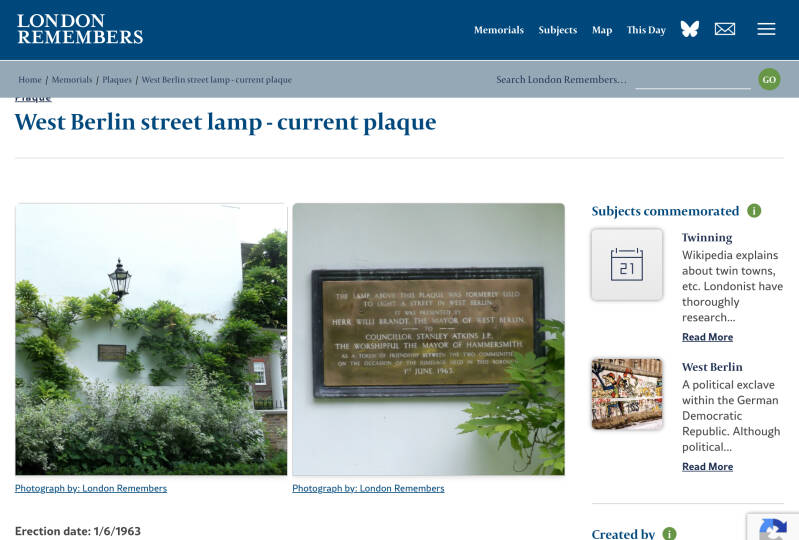
In 1963, a street lamp that had formerly been in West Berlin was given by Willy Brandt, then Mayor of West Berlin, to mark Hammersmith's twinning with the Berlin (previously West Berlin) district of Neukölln. It now stands on the wall of Westcott Lodge, facing the gardens. Below it is a plaque which reads: "The lamp above this plaque was formerly used to light a street in West Berlin. It was presented by Herr Willi Brandt, Mayor of West Berlin to Councillor Stanley Atkins, L. P., The Worshipful the Mayor of Hammersmith, as a token of friendship between the two communities on the occasion of the Jumelage held in this Borough, 1st June 1963."
THE RUTLAND ARMS P.H.
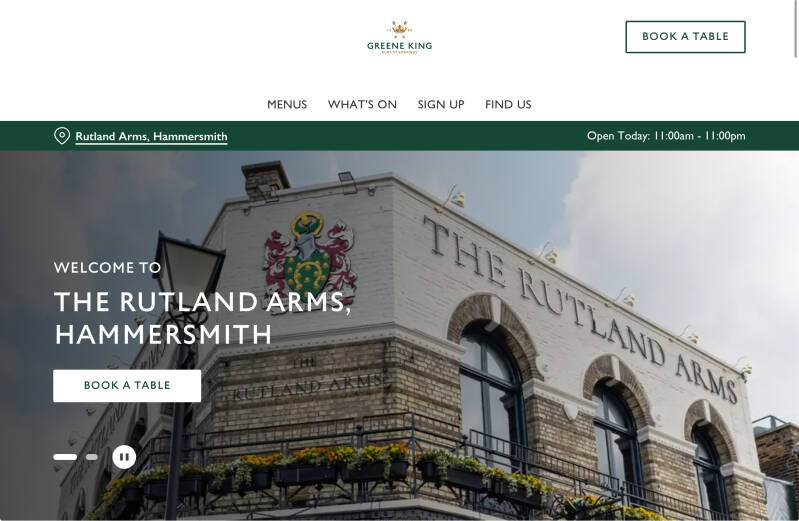
THE BLUE ANCHOR P.H.


